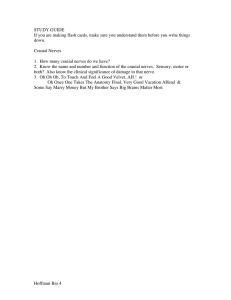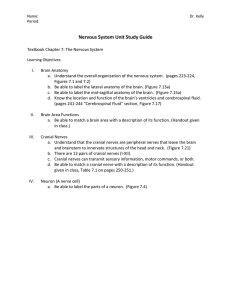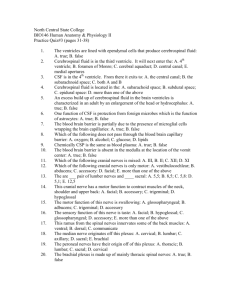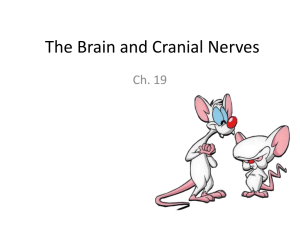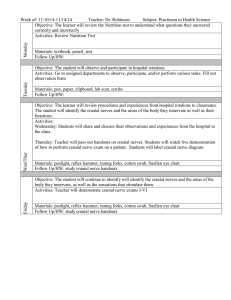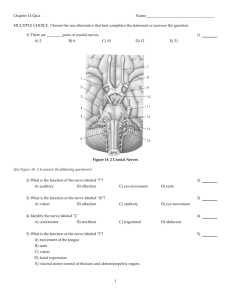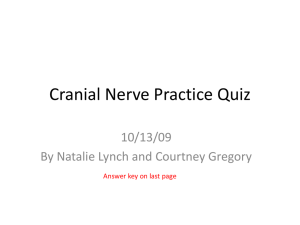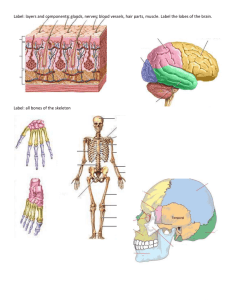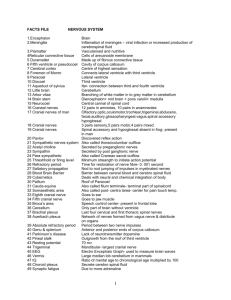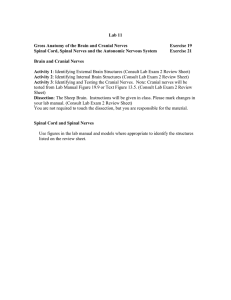(7) Cranial Nerves
advertisement
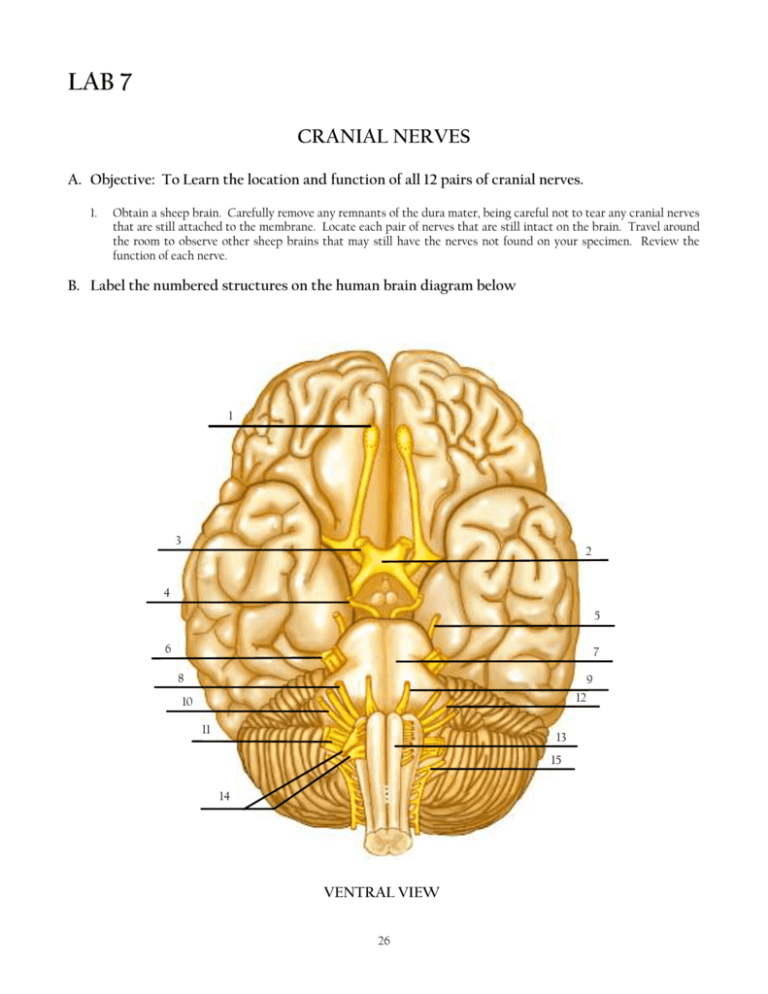
LAB 7 CRANIAL NERVES A. Objective: To Learn the location and function of all 12 pairs of cranial nerves. 1. Obtain a sheep brain. Carefully remove any remnants of the dura mater, being careful not to tear any cranial nerves that are still attached to the membrane. Locate each pair of nerves that are still intact on the brain. Travel around the room to observe other sheep brains that may still have the nerves not found on your specimen. Review the function of each nerve. B. Label the numbered structures on the human brain diagram below 1 3 2 4 5 6 7 8 9 12 10 11 13 15 14 VENTRAL VIEW 26 QUESTIONS [Refer to the diagram on the previous page to answer the following questions] 1. Why is the function of structure #11 so crucial to normal life function? 2. Name structures #4, #8, #10, and #11. What do these four nerves have in common? 3. Name the nerves that are sensory only. 4. Which nerve innervates four of the six extrinsic eye muscles? 5. Which two nerves transmit impulses regarding taste from the tongue? Describe which area of the tongue is innervated by each nerve. 6. Which nerve innervates the trapezius muscle? 7. Damage to which nerve might result in difficulty swallowing and loss of salivation from the parotid gland? 8. What non-parasympathetic function does the Vagus nerve have? 9. Which nerve innervates the muscles of the tongue? 10. Name the three branches of structure #6 and differentiate between the region and function of each 27 CRANIAL NERVES NAME NUMBER MOTOR, SENSORY or BOTH? I II III IV V1 V2 V3 28 SPECIFIC AREA SUPPLIED AUTONOMICS? (Yes or no and what is supplied if yes) CRANIAL NERVES NAME NUMBER MOTOR, SENSORY or BOTH? VI VII VIII IX X XI XII 29 SPECIFIC AREA SUPPLIED AUTONOMICS? (Yes or no and what is supplied if yes)
